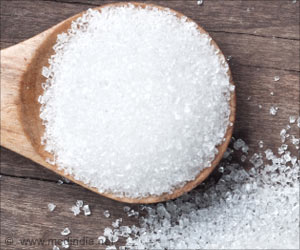To identify cancer-causing agents there are well-established mouse models, similar models are not available to readily test and identify age-promoting agents.
Recently, a mouse strain (
p16LUC mice) was developed that can be used to evaluate the transcription of
p16INK4, which is increasingly expressed during aging and in age-associated diseases. In this issue of the
Journal of Clinical Investigation, Norman Sharpless and colleagues at the University of North Carolina evaluated potential age-promoting compounds, including arsenic, a high-fat diet, UV light, and cigarette smoke in
p16LUC mice.
The authors found that a high fat diet did not accelerate
p16INK4 expression, but both UV light exposure and cigarette smoke exposure dramatically increased
p16INK4 expression compared to controls that had not been exposed to these age-promoting compounds. This study demonstrates that
p16LUC mice are an appropriate model system for evaluating potential age-promoting compounds.
Source-Eurekalert










